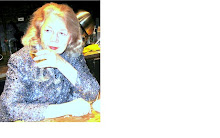September
14, 2015–February 07, 2016
The
Alfred H. Barr, Jr. Painting and Sculpture Galleries, fourth floor
Picasso Sculpture offers a broad survey of Pablo Picasso’s work in three
dimensions, spanning the years 1902 to 1964. The largest museum presentation of
Picasso’s sculptures to take place in the United States in nearly half a
century, the exhibition brings together approximately 140 sculptures from
Picasso’s entire career via loans from major public and private collections in
the U.S. and abroad, including 50 sculptures from the Musée national
Picasso–Paris. With many works on view for the first time in the U.S., it
provides an opportunity to explore a rarely seen aspect of Picasso’s long and
prolific career. The installation occupies the entirety of MoMA’s fourth floor
galleries, allowing sufficient space for the sculptures to be viewed fully in
the round. Picasso Sculpture is presented by MoMA in collaboration with
the Musée national Picasso–Paris, and is organized by Ann Temkin, The
Marie-Josée and Henry Kravis Chief Curator of Painting and Sculpture, and Anne
Umland, The Blanchette Hooker Rockefeller Curator of Painting and Sculpture,
MoMA; with Virginie Perdrisot, Curator of Sculptures and Ceramics at the Musée
national Picasso–Paris.
Pablo Picasso (Spanish, 1881–1973)
was trained as a painter but not as a sculptor; from the start, this
facilitated a natural disregard for tradition in his sculptural work. Although
Picasso’s sculpture is a relatively unfamiliar aspect of his career, it is one
that has been profoundly influential throughout the 20th and 21st centuries. It
is characterized primarily by the sheer pleasure of invention and
experimentation. Over the course of six decades, Picasso redefined the terms of
sculpture again and again, setting himself apart not only from what his
colleagues were doing but also from what he himself had previously done.
Whether portraying humans, animals, or objects, he invested his sculptures with
a powerful charisma that belies their inanimate status. Relative to painting,
sculpture occupied a deeply personal place in the artist’s work. During his
lifetime, Picasso kept most of his sculptures, living among them as if they
were family members. After his death, many became part of the founding
collection of the Musée national Picasso–Paris.
Picasso’s commitment to sculpture
was episodic rather than continuous, and every gallery or pair of galleries in
this exhibition represents a distinct chapter of his sculptural career. The
passages from gallery to gallery parallel Picasso’s moves from one studio to
the next. Each new phase brought with it a new set of tools, materials, and
processes, and often a new muse and/or technical collaborator.
Organized by The Museum of Modern
Art in collaboration with the Musée national Picasso–Paris.
The exhibition at MoMA is made
possible by Hyundai Card.
Major support is provided by Monique
M. Schoen Warshaw, Marie-Josée and Henry Kravis, Robert Menschel and Janet
Wallach, and Sue and Edgar Wachenheim III.
Generous funding is provided by Judy
and John M. Angelo and by Cornelia T. Bailey.
Additional support is provided by
the MoMA Annual Exhibition Fund.
This exhibition is supported by an
indemnity from the Federal Council on the Arts and the Humanities.
Support for the publication is
provided by The International Council of The Museum of Modern Art and by the Jo
Carole Lauder Publications Fund of The International Council of The Museum of
Modern Art.
Education programs for this
exhibition are made possible by a partnership with Volkswagen of America.
MoMA Audio+ is supported by
Bloomberg Philanthropies.



No comments:
Post a Comment